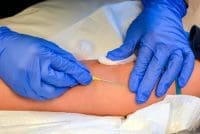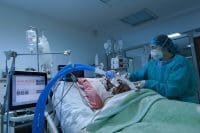Achieving the values associated with an injury prevention program such as safe patient handling (SPH) is rooted within the confines of its ability to gain end-users’ commitment to use patient-lift equipment. Commitment is at the core of what it takes to accomplish the program’s evidenced based outcomes, which include reductions in employee injuries, lost production work days, and restricted or light duty work days.
The very premise of what makes an SPH program successful is the willingness of the end-user to use patient-lift technology in everyday clinical practice. It’s up to the facility coordinator to implement program processes and methodologies in such a way that end-users understand that this innovative technology is capable of producing quality outcomes equivalent to or even better than traditional practice processes—and safer and without the physical risks for injuries.
Implementation is challenging
The success for which program outcomes are achieved depends on the program coordinator’s ability to effectively transition the injury prevention’s program design into existing clinical practices and processes. Coordinators must be able to overcome the challenges that are presented, because those same existing practices and processes are firmly established as professional nursing practice standards.
It’s not uncommon for clinicians to “cling” to traditional nursing processes while remaining steadily resistant to newer advancements in nursing practice methodologies. The inherent nature of perfecting professional nursing practice relies heavily on consistent and persistent repetition of practice processes. This also includes the continuation of unsubstantiated lifting processes that have consistently demonstrated the inability to protect clinical workers from musculoskeletal injuries. Breaking the mode of performing outdated nursing practices is difficult especially when many care providers have established their careers on these very practices. Furthermore, the consistent challenge of choosing between comfort, convenience, and familiarity versus uncertainty, unproven, and questionable relevance are embedded obstacles. To overcome such obstacles, coordinators should apply processes which makes it easier for staff to at least consider the use of patient-lift equipment.
Given this situation, how can coordinators effectively convince staff that patient-lift technology is more clinically advantageous than traditional practices and processes? And how can staff be convinced that patient-lift technology is safe to use in care of patients in practice settings? Finally, and most importantly, how can coordinators get staff to commit to the SPH program? The answers include sound communication and process techniques, along with a methodical plan for how evidenced based information is introduced into the implementation process.
Here are some examples of strategies to consider:
- Give staff input into the equipment selection process; people like to see their ideas work.
- Ensure that equipment selections are comparable with patients’ mobility challenges; staff won’t use equipment if it’s not applicable to their practice situation.
- Place equipment and associated lift accessories or slings in locations where manual lifting is likely to occur. Busy staff can’t leave the patient care area in search of patient-lift devices, so having the devices conveniently located will help maximize end-user utilization.
Overcoming obstacles
Overcoming the obstacles of convincing clinical personnel that there are safer, more effective and efficient approaches to improving and enhancing nursing care is needed for the outcomes of a successful SPH program to be realized. Implementing strategies to achieve program goals should be fulfilled with an understanding of professional nursing practice. The ability to create a successful SPH program has everything to do with the SPH coordinator’s ability to inspire end-users to use equipment. The question that must be answered is, what will it take for your staff to adopt patient-lift technology?
Roric P. Hawkins is the founder and President of The RP Hawkins Group and is the safe patient handling coordinator at Michael E. DeBakey VAMC in Houston, TX. The views expressed here are his own.


















